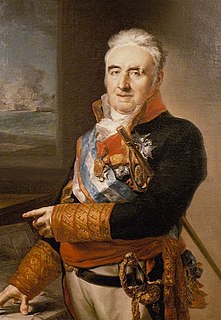 W
WIgnacio María de Álava y Sáenz de Navarrete was a Spanish naval officer, present at the Battle of Trafalgar.
 W
WMiguel Ricardo de Álava y Esquivel, KB, MWO was a Spanish General and statesman who served as Prime Minister of Spain in 1835. He was born in the Basque Country, at Vitoria-Gasteiz, in 1770. Álava holds the distinction of having been present at both Trafalgar and Waterloo, fighting against the British at the former and with them at the latter.
 W
WPedro de Alcántara Téllez-Girón y Alfonso-Pimentel, 2nd Prince of Anglona (1786–1851), was a Spanish military officer during the Peninsular War, Director of the Prado Museum between 1820 and 1823 and Captain General of Cuba. He was the 2nd Prince of Anglona in the peerage of Sardinia and the 9th Marquess of Jabalquinto in the peerage of Spain.
 W
WBrigadier Mariano José Manuel Bernardo Álvarez Bermúdez de Castro y López Aparicio was a Spanish military officer, and the military governor of Girona during the siege by the French during the War of Spanish Independence.
 W
WJuan Carlos de Aréizaga was a Spanish general, who fought in the Peninsular War.
Francisco Ballesteros emerged as a career Spanish General during the Peninsular War.
 W
WJoaquín Blake y Joyes was a Spanish military officer who served with distinction in the French Revolutionary and Peninsular wars.
 W
WJosé de Bustamante y Guerra, sometimes referred to simply as Bustamante, was a Spanish naval officer, explorer, and politician.
 W
WVicente María Cañas y Portocarrero, 7th Duke of Parque, also known in some biographies as Diego de Cañas y Portocarrero, was a Lieutenant-General and a Spanish military leader during the Peninsular War. He commanded the Spanish forces at the battles of Tamames, El Carpio and Alba de Tormes.
 W
WDon Pedro Caro y Sureda, 3rd Marquis of la Romana was a Spanish general of the Peninsular War.
 W
WFrancisco Javier Castaños Aragorri Urioste y Olavide, 1st Duke of Bailén was a Spanish general and politician who excelled during the French Revolutionary Wars and the Napoleonic Wars. From July to September 1834, he served as the first president of the Senate of Spain, at that time called House of Peers.
 W
WJuan de la Cruz Mourgeón y Achet was a Spanish general and colonial administrator.
 W
WGeneral José María de la Cueva, 14th Duke of Alburquerque (1775–1811) was an aristocrat, diplomat, and senior Spanish officer in the Peninsular War.
 W
WLuis Daoíz y Torres was a Spanish artillery officer and one of the leaders of the Dos de Mayo Uprising that signalled the start of the Spanish War of Independence. Daoíz's surname is derived from the town of Aoiz in Navarre and he was descended from a long line of Spanish gentry with soldiering associations dating to the Reconquista. Daoíz's great grandfather married the daughter of the Count of Miraflores de los Angeles and Daoíz spent much of his early life in palaces owned by the family. He was born in Seville and, after receiving a Catholic education, trained at the Royal School of Artillery in Segovia. Daoíz saw action against the Moors in Spanish North Africa, where he was commended for his bravery and promoted to lieutenant. He also served against the French in the short-lived War of the Roussillon where he was captured. After refusing to serve in the French army, he was imprisoned.
 W
WJuan Martín Díez, nicknamed El Empecinado, was a Spanish military leader and guerrilla fighter, who fought in the Peninsular War.
 W
WJoaquín Ibáñez Cuevas y de Valonga, Baron de Eroles led a Spanish division against Imperial France in a number of actions during the Peninsular War. A lawyer at the outbreak of war, he took command of guerillas who resisted the French occupation of his native Catalonia. He fought at Molins de Rey in 1808. Captured by the French at Gerona in 1809, he later escaped. By 1810 he led one of four regular divisions of the Army of Catalonia. In November 1810 he destroyed a French convoy at La Junquera. His men were driven off Montserrat Mountain on 25 July 1811. His division wiped out a French column at Col de Balaguer on 18 January 1812. Six days later he was badly beaten at Altafulla when he mistakenly attacked Maurice Mathieu's superior French force in a thick fog. On 5 March he defeated a French force that attacked him at Roda de Isábena. Later in the war he liberated a number of towns from the French.
 W
WRoger-Bernard-Charles Espagnac de Ramefort, better known as Charles d'Espagnac or, from 1817, Carlos d'Espagne, was a French-born Spanish general who saw distinguished service in the Peninsular War, but as governor of Barcelona, was a cruel, despotic and much-hated persecutor of Spanish liberals. In his letters and dispatches, Wellington refers to him as Carlos de España.
 W
WFrancisco Espoz Ilundáin, being better known as Francisco Espoz y Mina, was a Spanish guerrilla leader and general.
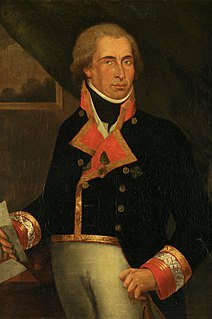 W
WDionisio Alcalá Galiano was a Spanish naval officer, cartographer, and explorer. He mapped various coastlines in Europe and the Americas with unprecedented accuracy using new technology such as chronometers. He commanded an expedition that explored and mapped the Strait of Juan de Fuca and the Strait of Georgia, and made the first European circumnavigation of Vancouver Island. He reached the rank of brigadier and died during the Battle of Trafalgar.
 W
WGregorio García de la Cuesta y Fernández de Celis was a prominent Spanish general of the Peninsular War.
 W
WPedro Agustín Girón y de Las Casas, 1st Duke of Ahumada, 4th Marquess of the Amarillas (1778–1842) was a Spanish military officer and politician. The son of a general, he fought against the French during the French Revolutionary Wars. During the Napoleonic Wars he became a general officer and again fought the French. In later life he held military and political positions.
 W
WFederico Carlos Gravina y Nápoli was a Spanish admiral during the American Revolution and Napoleonic Wars. He died of wounds sustained during the Battle of Trafalgar. Explorer Jacinto Caamaño named the Gravina Island in Alaska in his honor.
 W
WBaltasar Hidalgo de Cisneros y de la Torre (1756–1829) was a Spanish naval officer born in Cartagena. He took part in the Battle of Cape St Vincent and the Battle of Trafalgar, and in the Spanish resistance against Napoleon's invasion in 1808. He was later appointed Viceroy of the Viceroyalty of the Río de la Plata, replacing Santiago de Liniers. He disestablished the government Junta of Javier de Elío and quelled the Chuquisaca Revolution and the La Paz revolution. An open cabildo deposed him as viceroy during the May Revolution, but he attempted to be the president of the new government junta, thus retaining power. The popular unrest in Buenos Aires did not allow that, so he resigned. He was banished back to Spain shortly after that, and died in 1829.
 W
WDon Pedro de Alcántara Álvarez de Toledo y Salm-Salm, 13th Duke of the Infantado, was a Spanish politician and general.
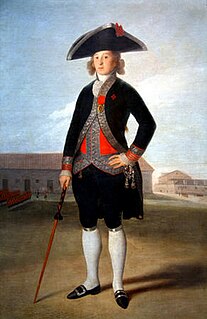 W
WManuel Lapeña Rodríguez y Ruiz de Sotillo, sometimes referred to as Lapeña, was a Spanish military officer who served during the Peninsular War. He rose through the Spanish army's ranks to become Captain General of Andalusia. He is primarily known for commanding an Anglo–Spanish expedition from Cádiz, with the intention of raising the siege on that city, which led to the Battle of Barrosa.
 W
WBrigadier-General Luis Roberto de Lacy, 11 January 1775 – 5 July 1817, was a Spanish professional soldier of Irish descent, who served in the Spanish and French Imperial armies.
 W
WLuis Rebolledo de Palafox y Melzi, 4th Marquess of Lazán, 9th Marquess of San Felices de Aragón was an Aragonese officer and general during the Spanish War of Independence. Alongside his brother José de Palafox, the Duke of Saragossa, Lazán was a national hero in 19th century Spain for his defence of Saragossa from the French Imperial armies in 1808 and 1809.
 W
WSantiago Antonio María de Liniers y Bremond, 1st Count of Buenos Aires, KOM, OM was a French officer in the Spanish military service, and a viceroy of the Spanish colonies of the Viceroyalty of the River Plate. Although born Jacques de Liniers in France, he is more widely known by the Spanish form of his name, Santiago de Liniers.
 W
WFrancisco Tomás de Anchia Longa was a Spanish general.
 W
WEnrique MacDonell, also spelled MacDonnell, was an Irish-Spanish admiral noted for his participation in several sea battles including the Battle of Trafalgar.
 W
WFrancisco Casimiro Marcó del Pont y Ángel was a Spanish soldier and the last Governor of Chile. He was one of the main figures of the Chilean independence process, being the final Spaniard to rule as Royal Governor of Chile from 1815 to 1817, when he was deposed and captured by the patriot forces after the Battle of Chacabuco.
 W
WDon Jose de Mazarredo Salazar de Muñatones y Gortázar Order of Santiago was a Spanish naval commander, cartographer, ambassador, astronomer and professor of naval tactics. He is considered to be one of the best Spanish naval commanders of all time.
 W
WGabriel de Mendizábal Iraeta "Primer Conde de Cuadro de Alba de Tormes" was a Spanish general officer who fought in the Peninsular War. He is known for his command of Spanish forces during the Battle of the Gebora. Mendizábal rose through the ranks of the Spanish army, and was not of noble birth.
 W
WFrancisco Milans del Bosch (1769–1834) was a Spanish general. He entered the Spanish Army as a cadet. In February 1793, he becomes an alférez and participated in the War of the Pyrenees under general Antonio Ricardos, against the French. He became a lieutenant alférez in May and was wounded in the Battle of the Black Mountain in November 1794. He became a lieutenant in 1796.
 W
WGeneral Martín Francisco Javier Mina y Larrea, nicknamed El Mozo or El Estudiante (Student), was a Spanish lawyer and army officer, who later became a Mexican independence figure.
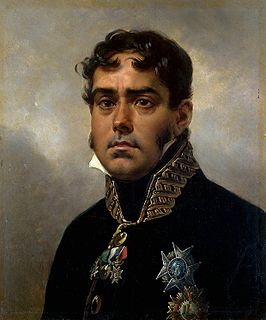 W
WPablo Morillo y Morillo, Count of Cartagena and Marquess of La Puerta, a.k.a. El Pacificador was a Spanish general.
 W
WTomás de Morla y Pacheco (1747-1812) was a Spanish soldier and politician, who served during the Spanish war of liberation.
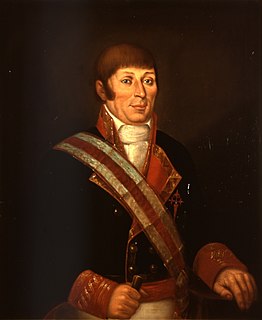 W
WFrancisco Antonio Mourelle de la Rúa was a Spanish naval officer and explorer from Galicia serving the Spanish crown. He was born in 1750 at San Adrián de Corme, near A Coruña, Galicia.
 W
WTeniente Pablo Muñoz de la Morena y Martínez-Zarco was a Spanish cavalry officer during the Napoleonic Wars, considered a Hero of the Peninsular War, who served also with distinction in the Spanish-French (1793-1795) and Spanish-Portugal (1801) wars. King Fernando VII decorated him in the battle of Mengíbar (1808)
 W
WJuan O'Neylle was a Spanish Field Marshal (Mariscal) of Spanish-Irish descent. He is best known as one of the commanders during the Spanish defeat at the Battle of Tudela.
 W
WJosé Rebolledo de Palafox y Melzi, 1st Duke of Saragossa was a Spanish general who fought in the Peninsular War.
 W
WBrigadier José Antonio de Pareja y Mariscal was a senior Spanish naval officer. He captained the Argonauta during the Battle of Trafalgar (1805) and in 1812 commanded Royalist troops during the Chilean War of Independence (1810–26).
 W
WVicente Genaro de Quesada was a Spanish military figure. He participated in the Battle of Burgos (1808) during the Peninsular War, leading the Royal Guard and Walloon Guard. Forming a rearguard for the shattered Spanish lines, these troops absorbed repeated charges by General Lasalle's French cavalry without yielding any ground.
 W
WTheodor von Reding was a Spanish general born and raised in Switzerland, where he commenced his military career. He served in Spain as a governor and general, leading Swiss and Spanish troops against Napoleonic forces and was admired for his leadership and bravery.
 W
WAntonio Ricardos Carrillo de Albornoz was a Spanish general. He joined the army of the Kingdom of Spain and fought against Habsburg Austria, the Portugal, and the First French Republic during a long military career. By embracing the Spanish Enlightenment, he earned the displeasure of conservative elements of society. He played an active role in reforming the Spanish military. Upon the outbreak of the War of the Pyrenees in 1793, the king sent him to command in Catalonia. He invaded Roussillon where he won several victories over the French. After his death in early 1794, the war went badly for Spain.
 W
WFrancesc Rovira i Sala or Francisco Rovira led miquelets against Imperial France in a number of partisan actions during the Peninsular War. A Catholic priest by profession, he took command of guerillas who resisted the French occupation of his native Catalonia. Soon he directed a force numbering a few thousand partisans. In February 1810, his men took part in the Battle of Vich. His most notable exploit was the surprise capture of Sant Ferran Castle in April 1811, which was part of the Siege of Figueras.
 W
WJuan José Ruiz de Apodaca y Eliza, 1st Count of Venadito, OIC, OSH, KOC was a Spanish naval officer and viceroy of New Spain from 20 September 1816 to 5 July 1821, during Mexico's War of Independence.
 W
WJuan Sánchez Ramírez (1762–1811) was a Dominican soldier who served as the Captain general of the modern Dominican Republic between 1808 and 1811. He also commanded the troops that fought against the French rule of Santo Domingo´s colony between 1808 and 1809 in the Battle of Palo Hincado, resulting in a victory over the French, and the return of Santo Domingo to Spanish hands.
 W
WJosé María Francisco Silvestre Santocildes y de Llanos was a famous Spanish noble, field marshal and general during the Peninsular War.
 W
WJosé Ramón de Urrutia y de las Casas was a Spanish captain general and military engineer.
 W
WCayetano Valdés y Flores Bazán (1767–1835) was a commander of the Spanish Navy, explorer, and captain general who served in the French Revolutionary and Napoleonic Wars, fighting for both sides at different times due to the changing fortunes of Spain in the conflict. He took part in a number of naval battles, including the Great Siege of Gibraltar, the Battle of Cape St Vincent, and the Battle of Trafalgar. He was an explorer, most notable in the Pacific Northwest, where he and Dionisio Alcalá Galiano conducted the first circumnavigation of Vancouver Island, in partial cooperation with George Vancouver. Over his long career he achieved the highest ranks in the Spanish Navy, eventually being named Captain General of Cadiz and Captain General of the Spanish Navy.
 W
WPedro Velarde y Santillán was a Spanish artillery captain famous for his heroic death in the Dos de Mayo uprisings against the French occupation of Madrid. He became a popular hero and martyr figure for Spain's subsequent War of Independence from the French Empire.
 W
WFrancisco Javier Venegas de Saavedra y Ramínez de Arenzana, 1st Marquess of Reunión and New Spain, KOC was a Spanish general in the Spanish War of Independence and later viceroy of New Spain from September 14, 1810 to March 4, 1813, during the first phase of the Mexican War of Independence.
 W
WGaspar de Vigodet (1747–1834) was a Spanish military officer with French roots who served as last Royalist Governor of Montevideo.
 W
WJosé Pascual de Zayas y Chacón (1772–1827) was a Spanish divisional commander of great skill and daring and a leading Spanish Army figure in the Peninsular War. He is renowned for his initiative at the Battle of Albuera.